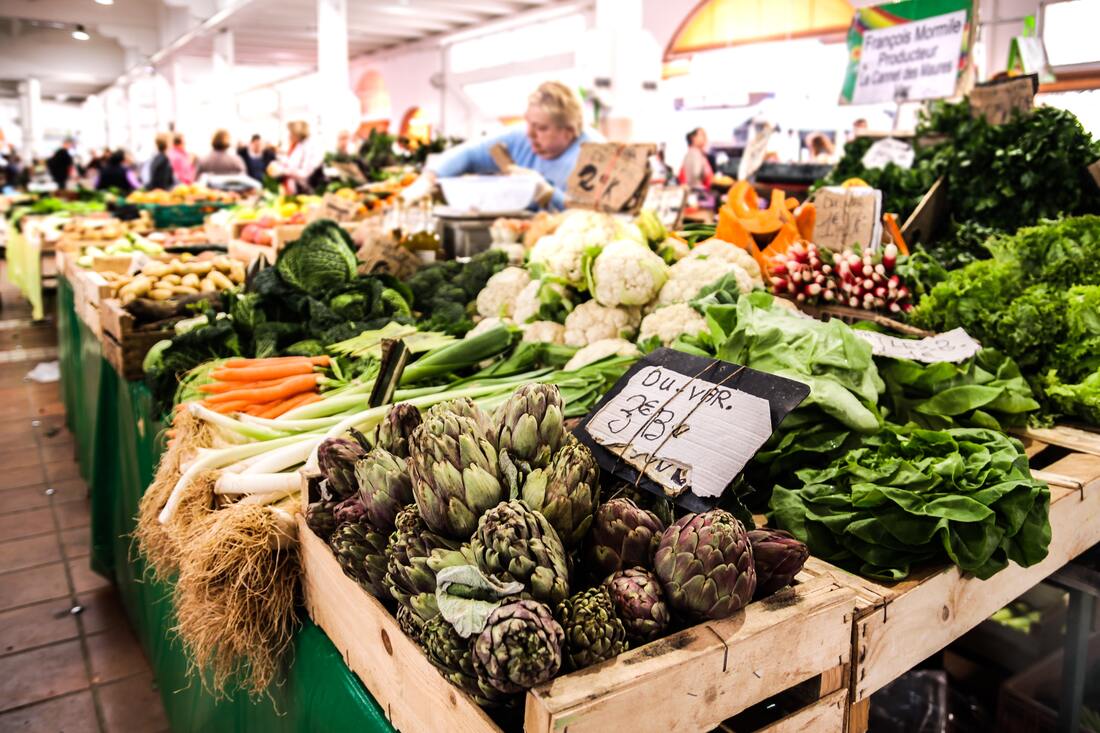|
SEARCH My Blog (Opens in new tab)
Here's how the top vegetables stack up Photo by Anna Kaminova on Unsplash Vegetables are essential for well-balanced diets for their high load of vitamins, minerals, dietary fibre, and phytochemicals. Right now, with the pandemic still active, salad vegetables play a more vital role than ever in our diet because of their capacity to improve our immune defences. They're also convenient since we can eat them as raw, so they present little challenge in preparing for our everyday meals. For example, a cold dish of various raw vegetables, seasoned with oil, vinegar or other dressings, can be quickly prepared. Just how vital are salad vegetables in our diet to overcome viral infections? All vegetables protect against chronic diseasesVegetables improve our gastrointestinal health, good vision, and reduced risk of heart disease, stroke, chronic diseases such as diabetes, and some forms of cancer. Some bioactive components (phytochemicals) of vegetables are strong antioxidants. These reduce the risk of chronic disease by protecting us against free radical damage, by detoxifying carcinogens, and even by influencing processes that alter the course of tumour cells. All vegetables offer us protection against chronic diseases - but some better than others as you'll see below. They are all healthy, functional foods. Each type of vegetable contains a unique combination of nutraceuticals (functional foods that provide both health benefits to reduce the risk of chronic diseases and essential nutrition). Therefore, we best eat a diversity of vegetables daily to get the full power of their immune defence benefits. Here's how the top vegetables stack upHere's how the top vegetables stack up in supporting our immune system. Eating these daily will improve your viral-defences.
TomatoTomatoes contain unique constituents that support our immune system. The major phytochemicals in tomato are the carotenoids consisting of 60% to 64% lycopene. In fact, tomatoes are the world's richest sources of lycopene, which is earning a reputation for helping to prevent prostate cancer as well as cancer of the bladder, cervix, and pancreas. Carotenoids are antioxidants which protect our cells from damage and degeneration. In addition to lycopene, tomatoes are one of the top contributors of potassium and an excellent source of ascorbic acid (the major source of vitamin C next to citrus). Bell pepperAll fresh peppers are excellent sources of vitamins A, C, K, carotenoids, and flavonoids. Antioxidant vitamins A and C help to prevent cell damage, cancer, and diseases related to aging, and they support our immune function. They also reduce inflammation such as that found in arthritis and asthma. Vitamin K promotes proper blood clotting, strengthens bones, and helps protect cells from oxidative damage. Red peppers, like tomatoes, are a good source of lycopene. Red bell peppers have significantly higher levels of nutrients than green. CucumberCucumber is not highly antioxidant, despite containing some vitamin C, betacarotene in the skin, fibre in the skin and seeds, and potassium. But, it is one of only a few foods to contain silicon. Some research points to silicon's important in connective tissue, such as skin, hair and nails. OnionOnions are well-known for their antiviral action - for thousands of years, in fact. This is mainly due to the flavonols and to quercetin in particular. These ingredients inhibit viral infection and have even been found to slow the growth and replication of RNA (RNA is how viruses invade host cells in our body). Quercetins are beneficial for allergies and hay fever - where they moderate the inflammatory response. Quercetin also helps our uptake and absorption of zinc, and zinc has been found to boost resistance against viruses, including the novel coronavirus. In summary, flavanoids present in onion (and garlic) have a strong inhibitory effect on virus multiplication, and can moderate immune systems responses such as allergies. CarrotCarrot is rich in beta-carotene (remember, in the skin of cucumbers?). Beta-carotene is a powerful antioxidant that can reduce inflammation and boost immune function by increasing leucocytes (white blood cells - our immunity cells). It is also an anti-inflammatory agent for virus infections, complementing onions. BeetrootAs a source of nitrate, beetroot provides a natural means of increasing nitric oxide (NO) bioavailability. Increased NO availability improves the condition of our arteries and veins and helps reduce hypertension. Beetroot is also one of the few vegetables that contain a group of highly bioactive pigments known as betalains which are known to reduce oxidative stress and inflammation. RadishRadish exists in a variety of shapes and sizes and colour (ranging from red to white and even black). On a per weight basis, radishes have high levels of vitamin C, more, for example, than a fresh tomato. They also contain some fibre, potassium and folate - all valuable for our health. Cooking destroys some of the vital beneficial enzymes in radish, so eating radish raw is best. LettuceLettuce has been referred to as a 'nutritional desert', featuring in Ancient Egyptian tomb drawings dating back to around 2500 BC. Most kinds of lettuce are a good source of vitamin C, folate, fibre and pro-vitamin A (in the form of beta-carotene as in cucumbers and carrots). Most varieties contain the carotenoids lutein and zeaxanthin. One of the many benefits of carotenoids is in protecting both the macula lutea of our eyes and our skin against the same photooxidative damage, i.e. the cellular damage (cand cancer) triggered by exposure to ultraviolet light. CeleryCelery has a long history as a medicinal plant, but has only relatively recently been considered a food source and eaten as a vegetable. Traditionally, it is used as a diuretic - attributed to its potassium and sodium content. Celery contains some vitamin C, a small amount of vitamin A as beta-carotene, sodium, potassium, calcium, and fibre. Many of its bioactive compounds overlap with lettuce. However, in animal experiments, the bioactive compounds of celery were also associated with lowered blood pressure. One of the most commonly cited folk remedies using celery relates to treating inflammatory conditions such as gout and arthritis. CrucifersCruciferous vegetables include cabbage, broccoli, cauliflower, Brussels sprouts, kales, kailan, Chinese cabbage, turnip, rutabaga, radish, horseradish, rocket, watercress and mustards. These are proven to help boost immunity. Broccoli is a good source of iron, phosphorus, vitamins A and C, and riboflavin. Cauliflower is also a good source of vitamin C. The nutritional value of the outer leaves of cauliflower and broccoli is much higher than the flower buds. They can be consumed raw in salads or cooked. Artichoke is a good source of minerals, especially potassium, calcium, and phosphorus, and has high dietary fibre content. Crucifers provide the richest sources of glucosinolates (the bitter taste) in our diet, and those the richest are broccoli, cabbage, Brussels sprouts, and kale. These protect against lung, prostate cancer, and breast cancer. Researchers claim that crucifers switch on the antioxidant genes and enzymes in specific immune cells. This effect combats free radicals in our body and prevents diseases from getting worse. For example, broccoli has antiviral properties against influenza viruses. Crucifers also improve our immune system by ensuring that immune cells in the gut and the skin function properly (known as intraepithelial lymphocytes). Aim for five serves of the various vegetables dailyRight now, with the pandemic active, it is more important than ever to have a diet with combined immune-boosting and antiviral effects - and these vegetables provide that support. Mix and match, and aim for five serves daily of the various vegetables above. Sounds delicious. > More posts to help you with EXERCISES > More posts to help you with DIABETES > If you are a @MEDIUM reader my publication Body Age Buster has hundreds of categorised posts which I have written especially for men and women over 50. Follow me on Quora for more health and fitness tips.
If you valued this article >> Follow me Leave a comment >> Share it >> Stay healthy If you have any questions email me and I will get back to you. Latest: get your free customised fitness plan designed uniquely for you.
|
ChoicesSince I was diagnosed at 50 with Type 2 diabetes I've been learning how to do bone-building fitness training which lowers my age. You can too. It's your choice. Walter Categories
All
Archives
May 2023
|
 RSS Feed
RSS Feed 


